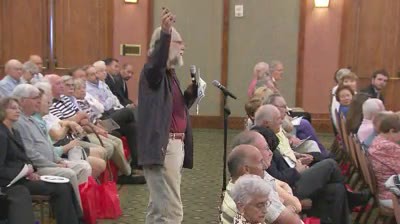 Why should Georgia landowners have to cede property rights
to benefit nobody in Georgia, and at risk of our aquifer and
environment?
But Dougherty County residents are still playing NIMBY instead
of trying to stop it entirely.
Why should Georgia landowners have to cede property rights
to benefit nobody in Georgia, and at risk of our aquifer and
environment?
But Dougherty County residents are still playing NIMBY instead
of trying to stop it entirely.
Carlton Fletcher wrote for the Albany Herald 7 September 2013, Local opposition to natural gas pipeline growing,
Dougherty County landowners who’ve been contacted by representatives of a group planning the 465-mile Sabal Trail natural gas pipeline projected to run underneath their property say they’re not convinced by assurances that the $3 billion project is safe.
And they’re preparing to challenge the pipeline even as project surveyors seek access to their land.
“This is not just a threat to my land, to our region’s water, Continue reading














